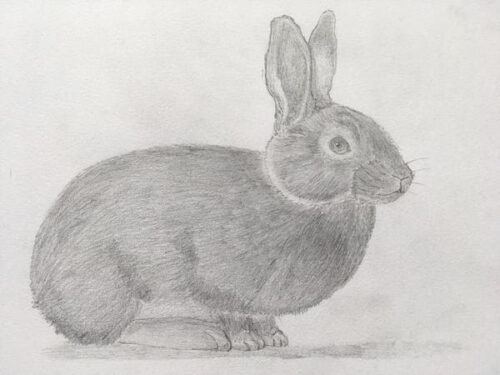This week, a session on a very accessible branch of philosophy: aesthetics, with the added bonus of making some art first!
It was created by our colleague Marley Davies for our Zoom P4C lessons at p4he.org. The examples below are from children in her online class.
Stimulus: The Art Challenge
Give your class the following menu of options. You can either do it in class, or set it as a homework:
- Depict something you can see as accurately as possible (e.g. bowl of fruit, a teapot)
- Convey the essence of a spring garden, or a battlefield, or any other imagined scene
- Make an artwork that creates feeling of peacefulness or excitement in the viewer
- Create an Olympic mascot that suggest the values of team work and ambition
- Symbolically represent the struggle between ignorance and understanding, or good and evil (or any other pair of opposite ideas).
- Make a greetings card without text for someone who has acquired a new pet/for a sibling’s birthday/to congratulate someone on a new job.
- To explore some abstract effect, playing with colour, shape, line, pattern but without intending to represent anything.
Mid-email PS: We’d love to see anything made in response to these, and with permission, share them in a future bulletin. Just hit reply to be a field correspondent!

The Discussion
Let students explain their art to each other – and pick a few to share with the rest of the class. Use these questions to scaffold the discussion:
- What were your intentions?
- What decisions did you make to try to achieve these?
- What makes it a work of art?
- How will an oberver know this is art?
Using the children’s art as a way into these questions will always make the discussion feel more real and personal. But if you don’t have time to get them making stuff, you can use this slidehow of professional art instead.
Marley has created a wonderful collection of puzzling questions about art – some accessible for young children, some aimed at older ones. Any of them can follow the stimulus of making art. There are so many corkers – take what you like, and keep the rest for a future lesson!
Quality and beauty
- What makes the art good? Is it the artist’s skill, or what the audience make of it?
- Can we objectively measure the quality of art, or is it always a matter of personal taste?
- Is it possible for a work of art to be good without being aesthetically pleasing?
- Can a work of art be good if it isn’t creative?
- Does the cultural context in which a work of art is created and experienced impact its quality?
- Is the emotional response elicited by a work of art an important factor in determining its quality?
- Is the longevity of a work of art an indicator of its quality?

Intention and interpretation:
- Is it better to be told what an artwork is about or is it better to imagine it yourself?
- Does the artist’s intention matter?
- Is it possible to create a work of art without any intention at all?
- Does the intention behind a work of art affect its aesthetic value?
- Should an artist be held responsible for the interpretation of their work, even if it was not their intended message?
- Should the audience’s interpretation of a work of art be given more weight than the artist’s intention?
- Can a work of art be considered successful if it does not achieve the artist’s intended message?

Necessity:
- Does the creation and appreciation of art serve a fundamental human need? If so, what need is that? Or is it simply a luxury or form of entertainment?
- What would a world without art be like?
Best wishes,
Marley, Tom and Jason
PPS: Short on time? For a quicker way into one of the questions above, here are Spot and Stripe arguing about art:
Never miss a resource! Get these P4C ideas sent straight to your inbox every week for free.